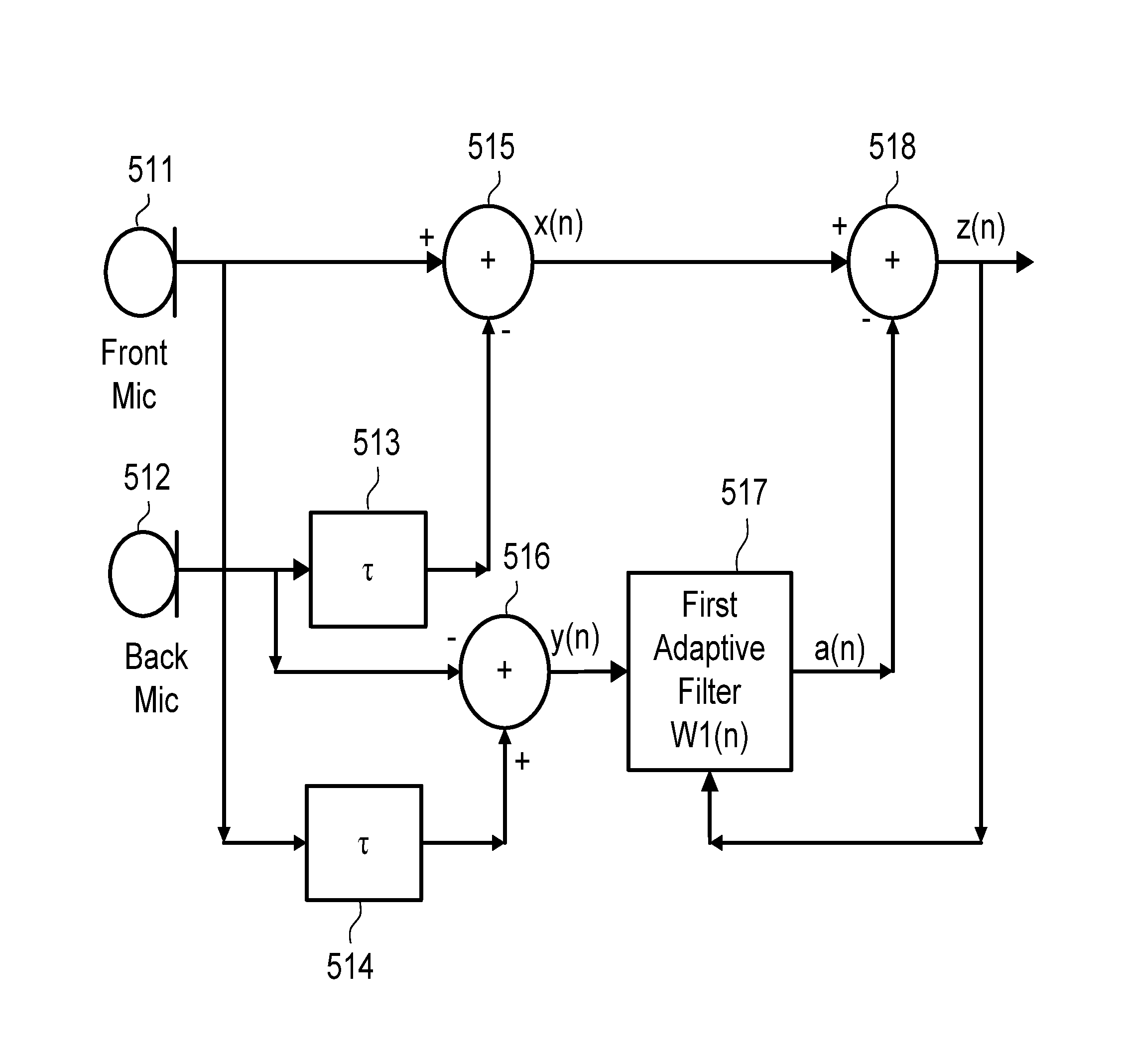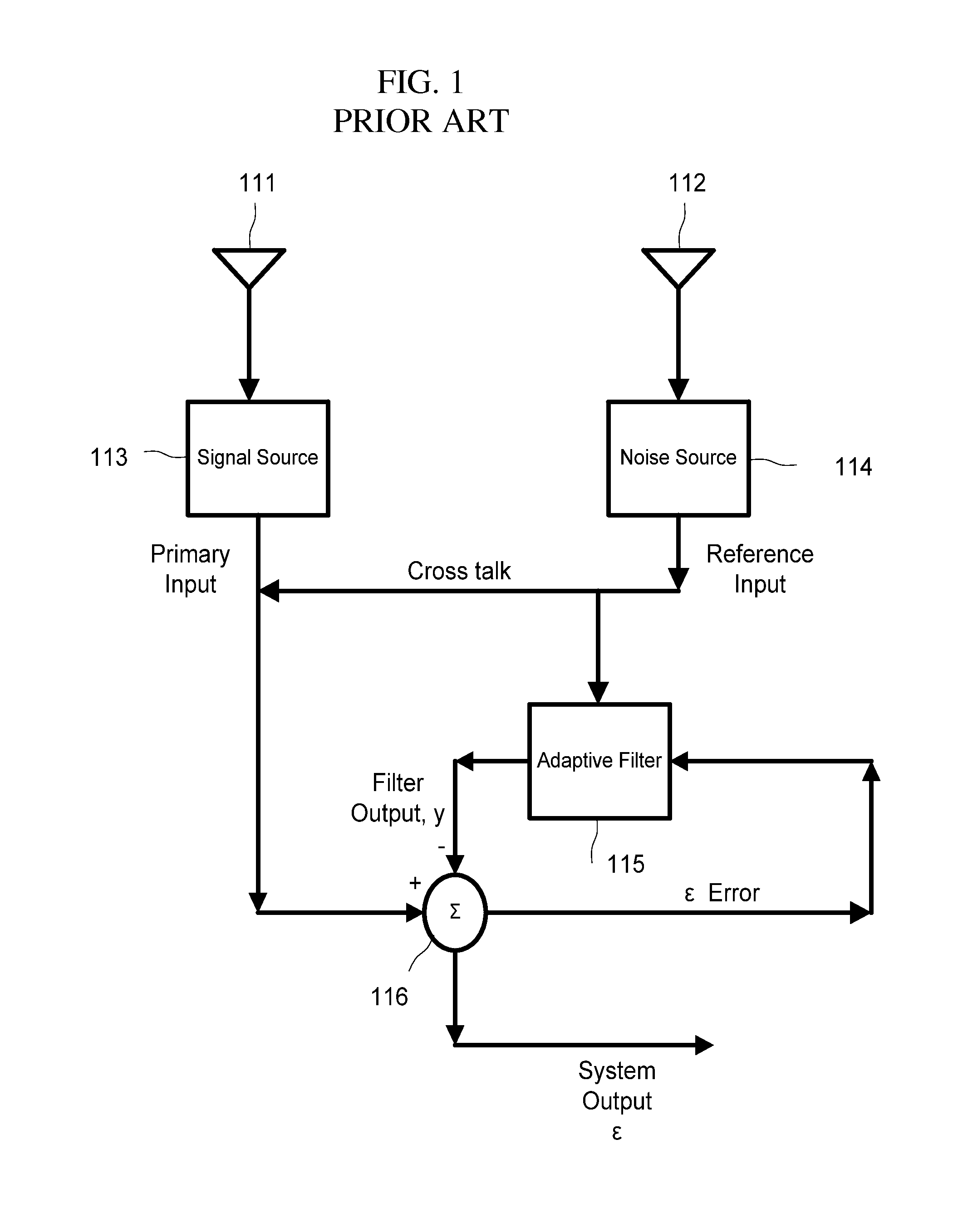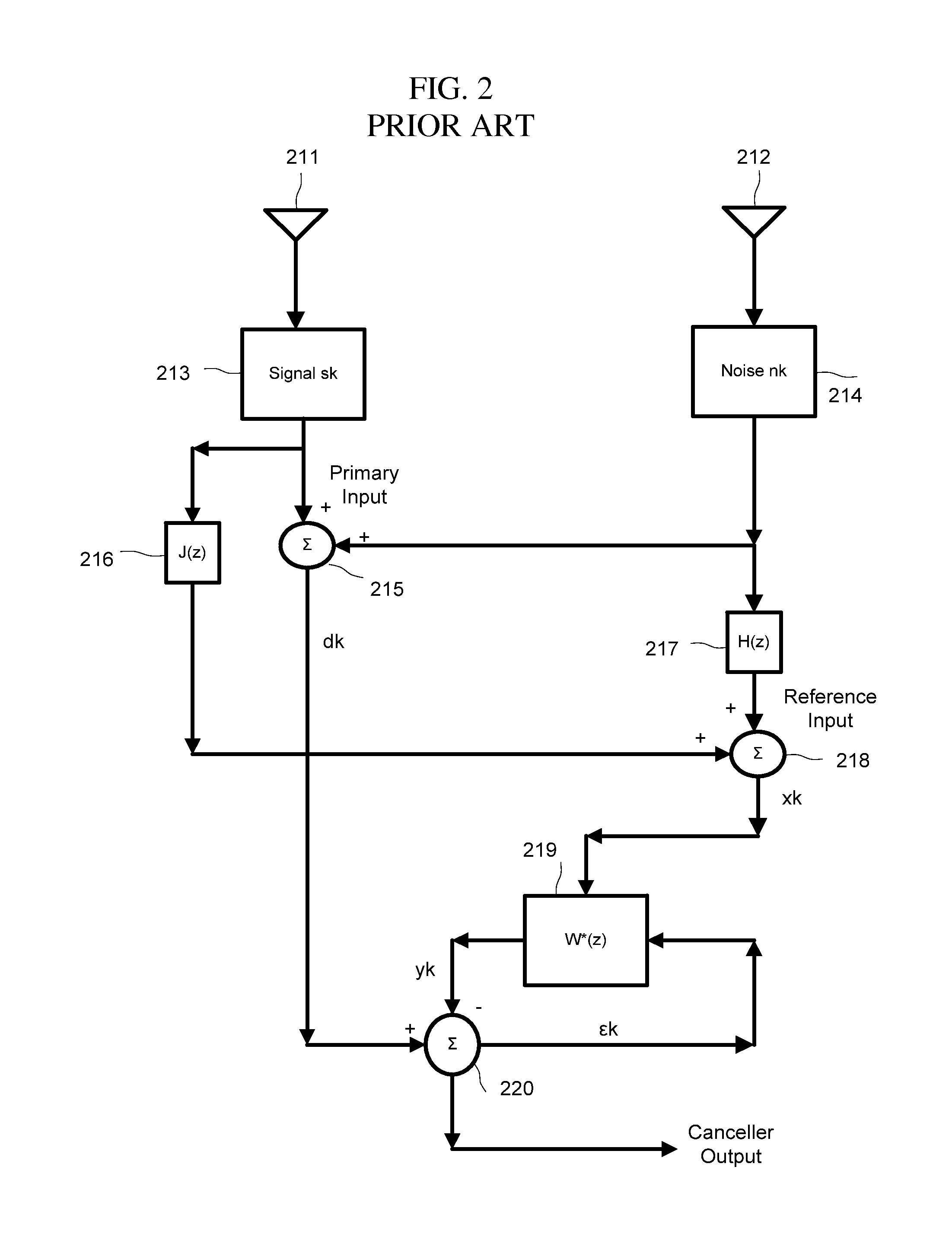If ambient
noise, at sufficient levels, is picked up by a
microphone, the intended
voice communication degrades and though possibly not known to the users of the
communication device, consumes more bandwidth or network capacity than is necessary, especially during non-speech segments in a two-way conversation when a user is not speaking.
Other available methods of
multiplexing such as Polarization Division Multiple Access (PDMA) and
Time Division Multiple Access (TDMA) cannot be used to separate signals from one
cell to the other since the effects of both vary with position, which makes signal separation practically impossible.
The background or ambient
noise degrades the voice quality.
Significantly, in an on-going cell phone call or other communication from an environment having relatively higher
environmental noise, it is sometimes difficult for the party at the receiving end of the conversation to hear what the party in the noisy environment is saying.
That is, the ambient or
environmental noise in the environment often “drowns out” the cell phone user'
s voice, whereby the other party cannot hear what is being said or even if they can hear it with sufficient volume the voice or speech is not understandable.
This problem may even exist in
spite of the conversation using a
high data rate on the communication network.
Attempts to solve this problem have largely been unsuccessful.
Unfortunately, the effectiveness of the method disclosed in the Hietanen patent is compromised by acoustical leakage, that is where the ambient or
environmental noise leaks past the ear
capsule and into the speech
microphone.
The Hietanen patent also relies upon complex, power consuming, and expensive
digital circuitry that may generally not be suitable for small portable battery powered devices such as pocket cellular telephones.
Unfortunately, the Paritsky patent discloses a
system using light guides and other relatively expensive and / or fragile components not suitable for the rigors of cell phones and other mobile devices.
Neither Paritsky nor Hietanen address the need to increase capacity in cell phone-based communication systems.
Any incorrect detection will degrade the performance of the
system.
Most such arrangements are still not effective.
They are susceptible to cancellation degradation because of a lack of coherence between the noise signal received by the reference microphone and the noise signal impinging on the transmit microphone.
Their performance also varies depending on the directionality of the noise; and they also tend to attenuate or distort the speech.
Consequently, filtering will inevitably have an effect on both the speech signal and the
background noise signal.
Distinguishing between voice and
background noise signals is a challenging task.
Even with the availability of modern signal-
processing techniques, a study of single-channel systems shows that significant improvements in SNR are not obtained using a single channel or a one microphone approach.
Surprisingly, most
noise reduction techniques use a single microphone system and suffer from the shortcoming discussed above.
However, the current multi-channel systems use separate front-end circuitry for each microphone, and thus increase hardware expense and
power consumption.
As with any system, the two microphone systems also suffer from several shortfalls.
The first shortfall is that, in certain instances, the available reference input to an adaptive noise canceller may contain low-level signal components in addition to the usual correlated and uncorrelated noise components.
These signal components will cause some cancellation of the primary input signal.
The second shortfall is that, for a practical system, both microphones should be worn on the body.
This reduces the extent to which the reference microphone can be used to pick up the noise signal.
The third shortfall is that, an increase in the number of noise sources or room
reverberation will reduce the effectiveness of the
noise reduction system.
 Login to View More
Login to View More  Login to View More
Login to View More 


